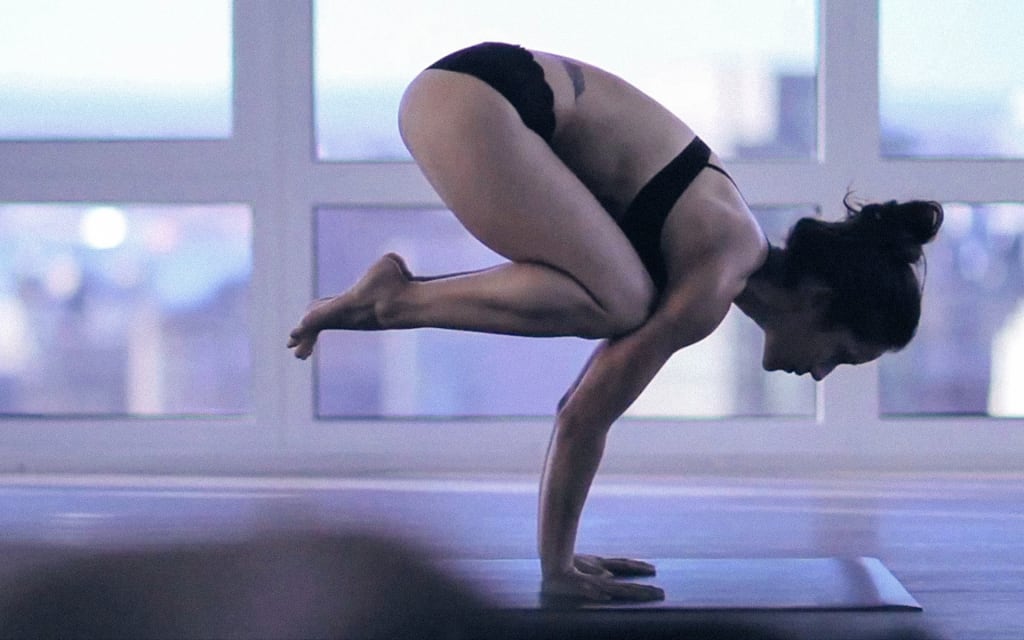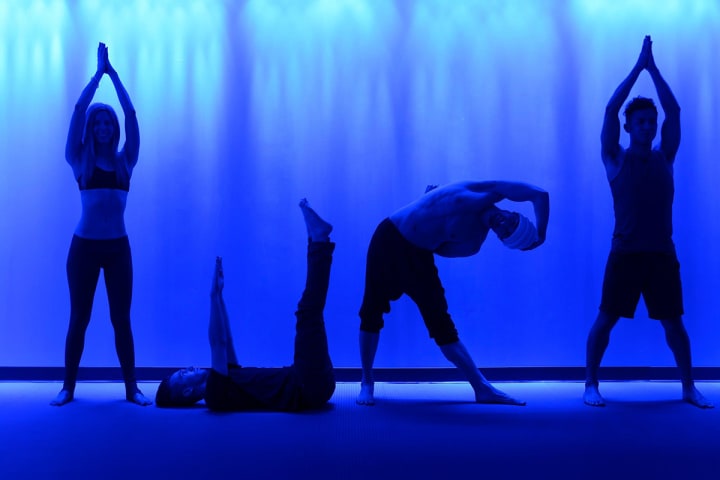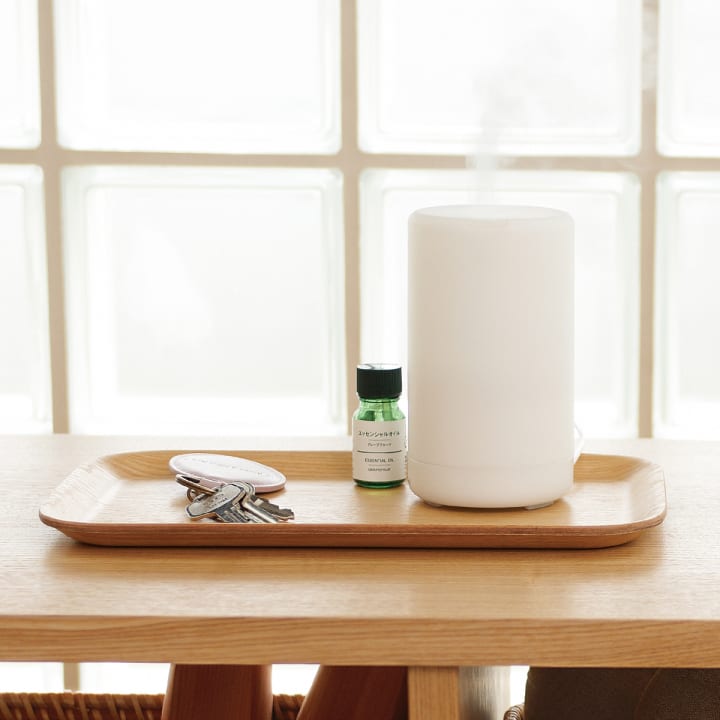Tips for Creating a Yoga Space at Home
Embrace a healthy mind and body with tips for creating a yoga space at home.

If you care very much about your health and body, then you might not be a newcomer to the word “yoga.” Yoga has no linguistic, cultural, or regional differences. It can be practiced easily. If you are familiar with a few postures and can guide yourself using instruction CDs, then there is no better place for you to practice than at your home, albeit some modifications are in order. Here are a few tips for creating a yoga space at your home.
Groundwork
This includes literal ground-work: preparing the ground for your task. You cannot concentrate on yoga when you are in sarpasana or snake pose and all you see is the dust on the floor. Or even worse, if you have a carpet and haven’t cleaned it for a while, you might inhale dust every time you bend. So, maintain a clean floor, vacuum the carpet regularly. Check if your yoga mat is soft enough to support your knees against the hard floor. If you sweat a lot, choose one that doesn’t slip when wet. Clothes for effectively practicing are another important aspect: choose elastic and comfortable clothes.
Visual Cues

Lighting: Lighting is very important for practicing yoga. If it is possible, use natural lighting and go for artificial lighting only if natural light is not possible. Research shows a correlation between the release of serotonin and exposure to sunlight. Serotonin is a hormone known to cause a feeling of euphoria. Also, exposure to morning sun helps in the production of vitamin D in the body. Make your schedule according to the availability of sunlight in your room. If you don’t like to practice with open windows, use light colored curtains for windows to allow ample light to pass through and to escape from peeping toms.
Colors: The fact that there is a branch of psychology dedicated to the effect of color on human behavior indicates the importance of choosing the correct color for the walls of your yoga room. Green and blue are known to have a de-stressing and calming effect on humans. In the case of green, growing green plants in the room is beneficial. They supply us with fresh oxygen along with calming us. But care must be taken in flushing the room in the morning as plants will create a buildup of carbon dioxide overnight. In the case of blue, wallpapers or paints will create the right color effect. However, make sure the paint you choose won't leave a lasting smell (see olfactory cues).
Auditory Cues
Auditory cues refer to the sounds in your yoga space at home. They include music or noise. While choosing a proper soundtrack for your practice, be careful to select one that soothes you and helps you stay calm and maintain composure. Jalatarangini or Chinese bamboo flute are examples of such scores. Avoid rock and pop music which are preferred in intense workout sessions. Listening to the voice of an instructor on a CD guiding your movements also works fine. If you live in a noisy neighborhood or with a loud roommate, choose a place away from them; they only serve to distract you.
Olfactory Cues

Olfactory cues refer to the smells in your yoga space. The memories related to olfactory stimuli can be implicit (recollection without deliberate effort) or explicit (associating meaning to odor) memories. The point is, there is a correlation between smell and emotion. So, it is vital for an individual to create and maintain odors that promote positive emotions. This can be achieved through burning incense or scented candles or the use of air fresheners, or one can use natural flowers instead of the chemicals. Similarly, it is important to avoid odors that bring about negative emotions, so keep the area clean and free of dirty laundry or dishes and avoid paints or wallpapers that produce a continuing scent.
Environmental Cues
One’s environment influences them a lot. If your room is as cluttered as the typical locker of a teenager, you may find it hard to concentrate on the matter at hand. It is difficult to maintain a pose if there is a Lego under your yoga mat! Maintaining an organized space does not mean just clearing out space enough for your yoga mat. Your visual field should be as clear of distractions or disturbances as possible. For those who live in a single room, clearing out may not be an option. In that case, maintain orderliness in your yoga space. This helps us focus on the procedure and avoid chaos in the mind.
Haptic Cues
Haptic cues refer the sense of touch. For our purposes, they can be divided into following two categories:
Temperature:
It is essential to maintain an ideal temperature in the room where you plan to practice yoga. If the environment is cold, oxygen molecules in the blood are bound tightly to the hemoglobin. As a result, muscle contractions are hindered due to reduced supply of oxygen to the muscles. In short, muscle movement will be hindered. This can be overcome with warm up exercises. If the temperature in the room is too warm, the body reacts by sweating. This not only causes inconvenience by making your clothes damp and your body sticky, but it also dehydrates you. Although these conditions don't generally create an immediate threat to those who practice yoga at home, it is in their best interest to prevent overly warm conditions.
Ventilation:
There should be proper ventilation in the room you choose to use for practicing yoga at home. Proper ventilation does not just mean having a fan or an air conditioner in the room (though they are enough if there is no other option). There should be a flow of air from outside into the room and vice versa. This is very important because many of the yoga asanas are performed in conjunction with long, deep breaths. This will lead to increased consumption of oxygen and release of more carbon dioxide than normal activities. Maintaining proper ventilation helps removing this air with extra carbon dioxide and replaces it with fresh air high in oxygen content.
Object of Focus

If meditation is a part of your yoga routine, you would do well to choose an object to use as a focal point. Some use a blank wall for this purpose. Others use a flame, but that requires a dark, closed room. These conditions may not suit everyone, especially if you are trying to maintain proper ventilation. So choose a statue of your favorite deity or a picture on the wall. You can also focus on a particular sound like a mantra or a suggestion you want to work on. Choose minimalist images, or else you might get lost in the intricate details of the image instead of focusing your thoughts.
Keep Everything You Need Handy
In the middle of your yoga practice, you might get thirsty or sweat a lot. You might strike a wrong pose and pull a muscle. Sometimes it may be difficult to go get something you need or an event may disturb your flow in a movement which is essential to your practice. Think ahead about what you might need, like a water bottle, towel, or a pain relief spray and keep them handy; you don’t know when you need them. As the old adage goes, “Plan for the worst, hope for the best.”
Be Hard On Yourself
Some of us determine every day to start yoga tomorrow. But when the time comes, getting out of bed becomes a herculean task, and bending down to reach your toes turns out to be nearly impossible. Do not give in to the petty excuses your sleepy brain throws at you. If you are going to a yoga studio, there will be an instructor to prod you. But at home, you are the instructor. So be hard on yourself, prod yourself, and pat yourself on the shoulder after a difficult posture. Don’t lose motivation. Listen to motivational scores if necessary. By following these tips for creating a yoga space at home, you have a place for yourself which is on par with a yoga studio but without all the fuss of competitive neighbors, the cost of studio memberships, and travel time. Some people require constant prodding and therefore cannot successfully practice on their own; they have to go to the studio where they participate enthusiastically. If you are comfortable practicing yoga on your own or prefer to practice privately, then these tips for creating a yoga space at home will help you a lot.
About the Creator
Mackenzie Lu
Namaste. Active yogi and life enthusiast. It has become her mission to spread the benefits of having the mind, body, and soul in tune with one another.






Comments
There are no comments for this story
Be the first to respond and start the conversation.